Lumière terrestre
4th November - 16th December 2023

180 x 150 cm
Signed, titled and dated at the back

180 x 150 cm
Signed, titled and dated at the back

180 x 150 cm
Signed, titled and dated at the back
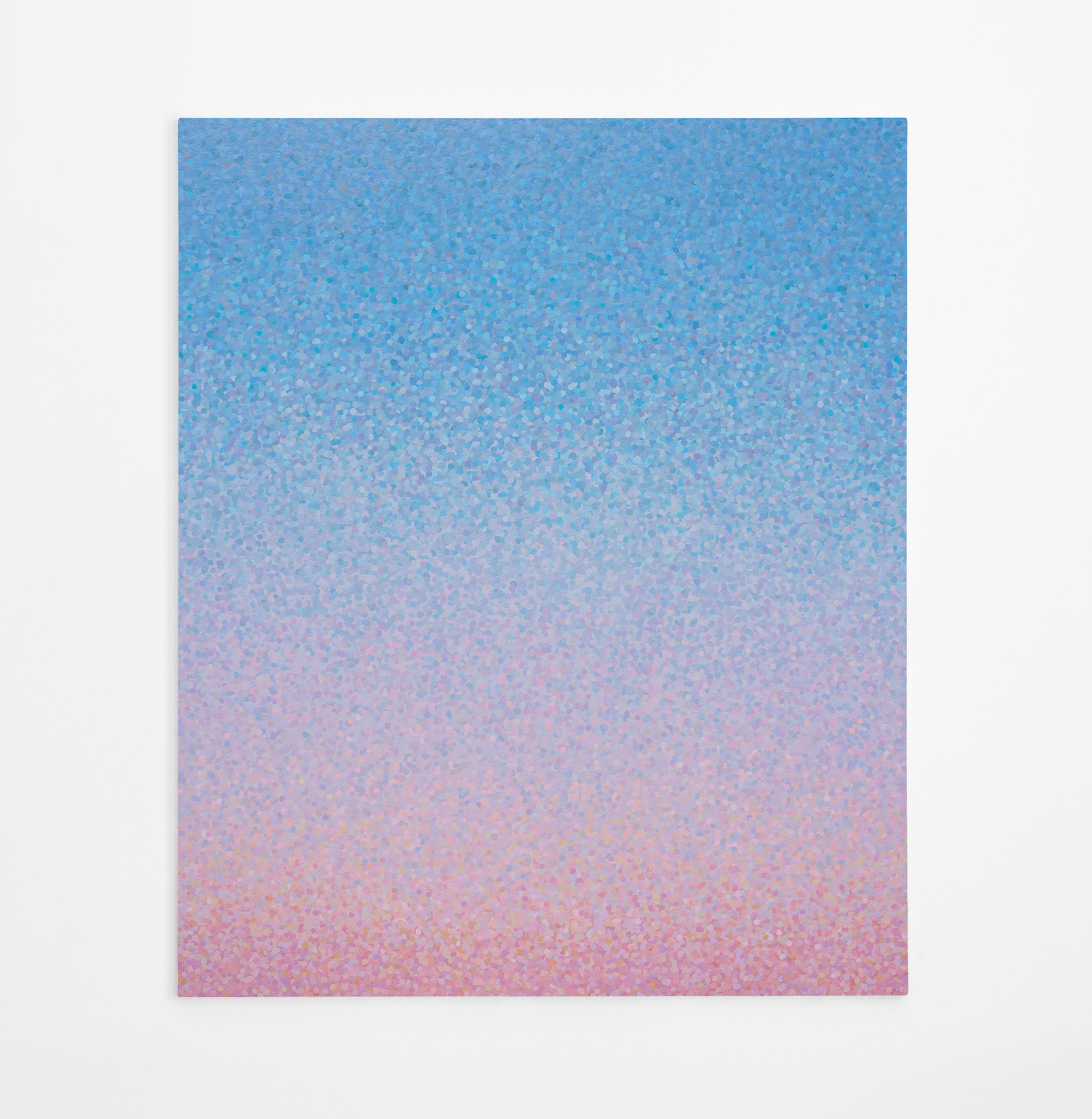
180 x 150 cm
Signed, titled and dated at the back
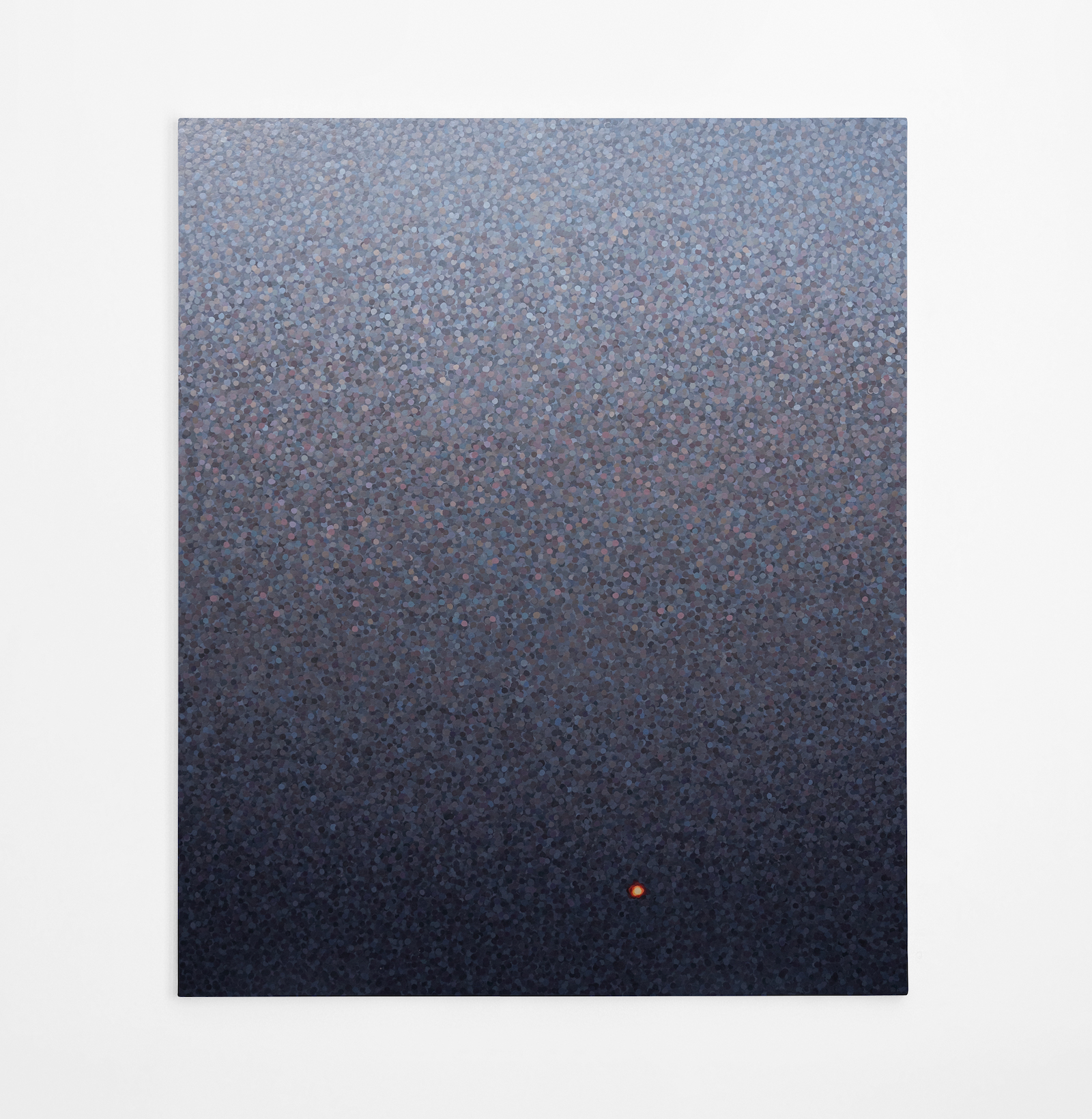
180 x 150 cm
Signed, titled and dated at the back
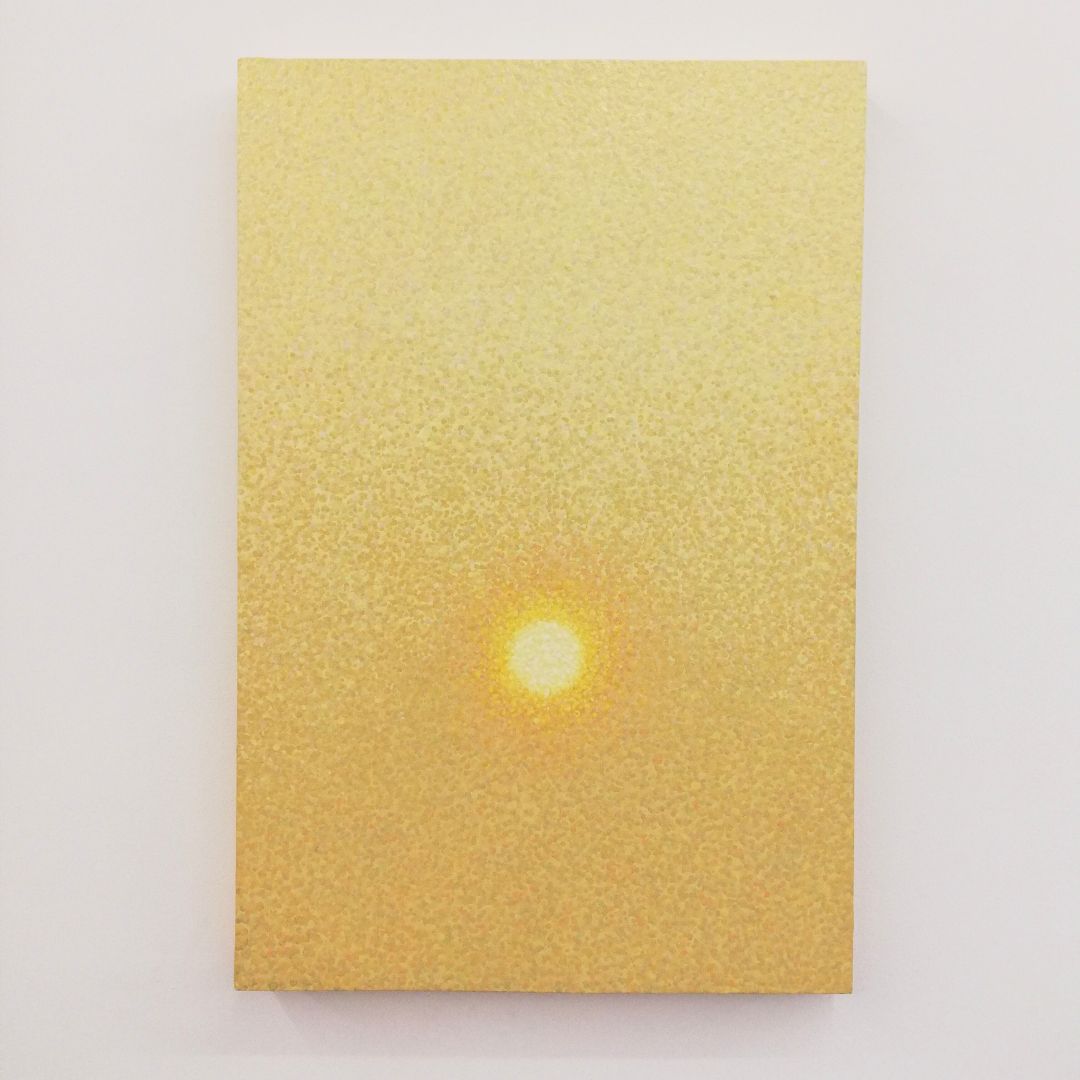
40 x 60 cm
Signed, titled and dated at the back

150 x 140 cm
Signed, titled and dated at the back
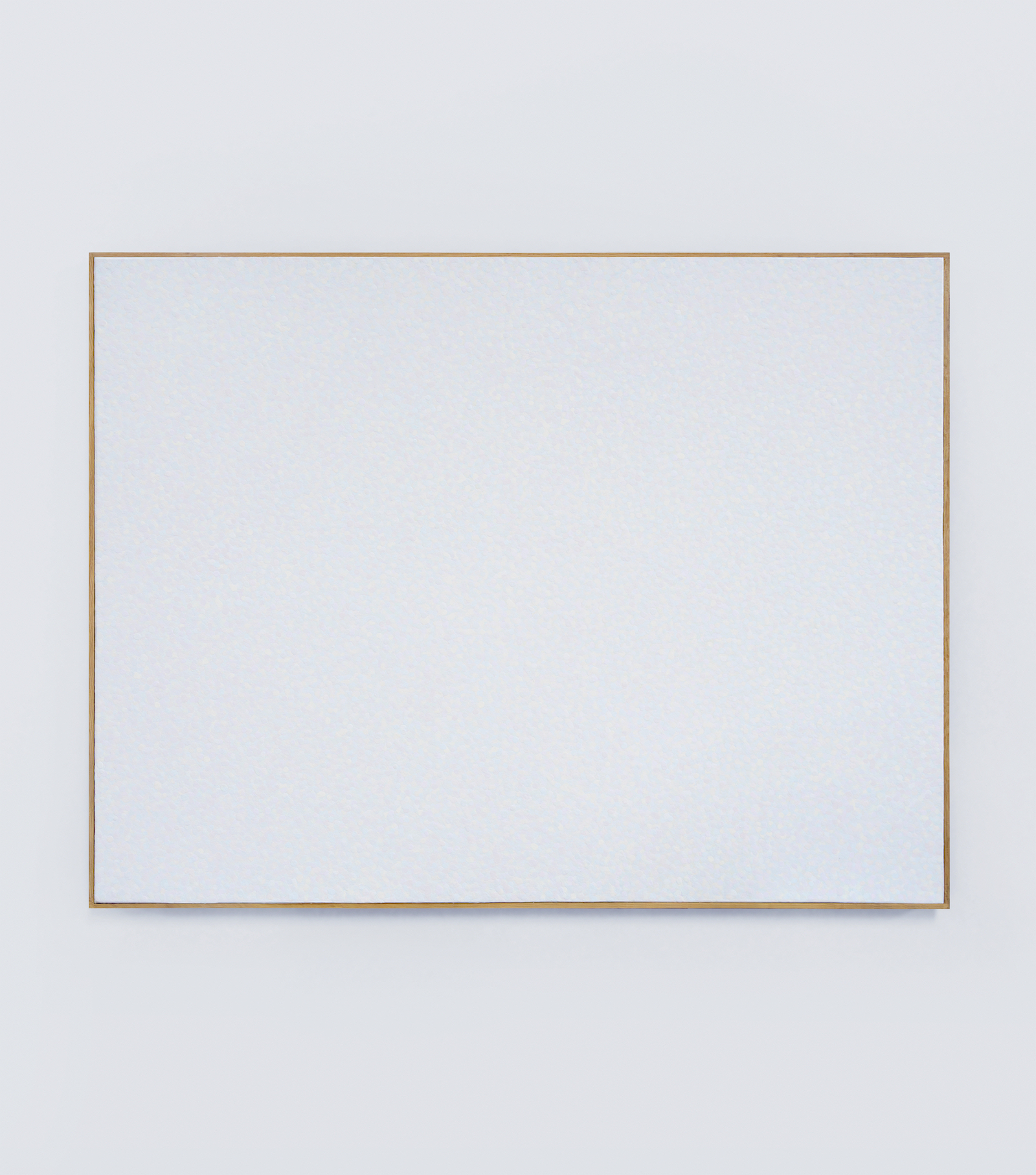
93 x 121,7 cm

24,5 x 27 cm
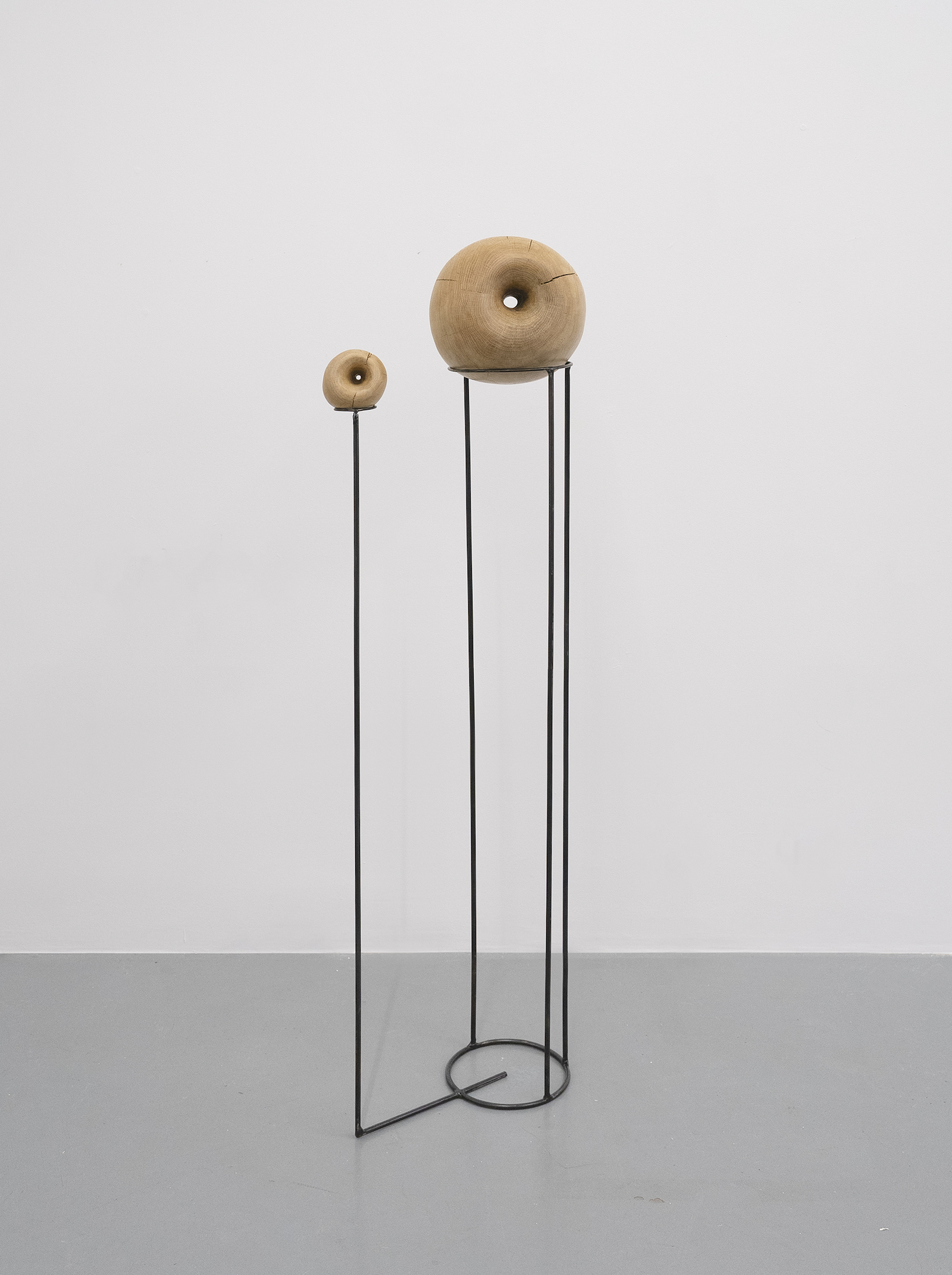
Oak wood, metal base
141 x 45 cm
Signed and dated
Spacetime Warp is a set of wooden sculptures, which offer a metaphor of general relativity. The trees contain within them a very particular testimony of the passage of time. The distance formed between each ring during a specific lapse of time symbolizes a form of materialized space-time. By sculpting each piece of wood in the same way that stars bend space-time by their mass, Spacetime Warp operates a symbolic inversion between visible and invisible. The act of carving makes matter disappear and gives shape to emptiness. Space-time, through the patterns left by the rings becomes palpable and visible, as the star is guessed by the light that can be seen at the end of the cavity.
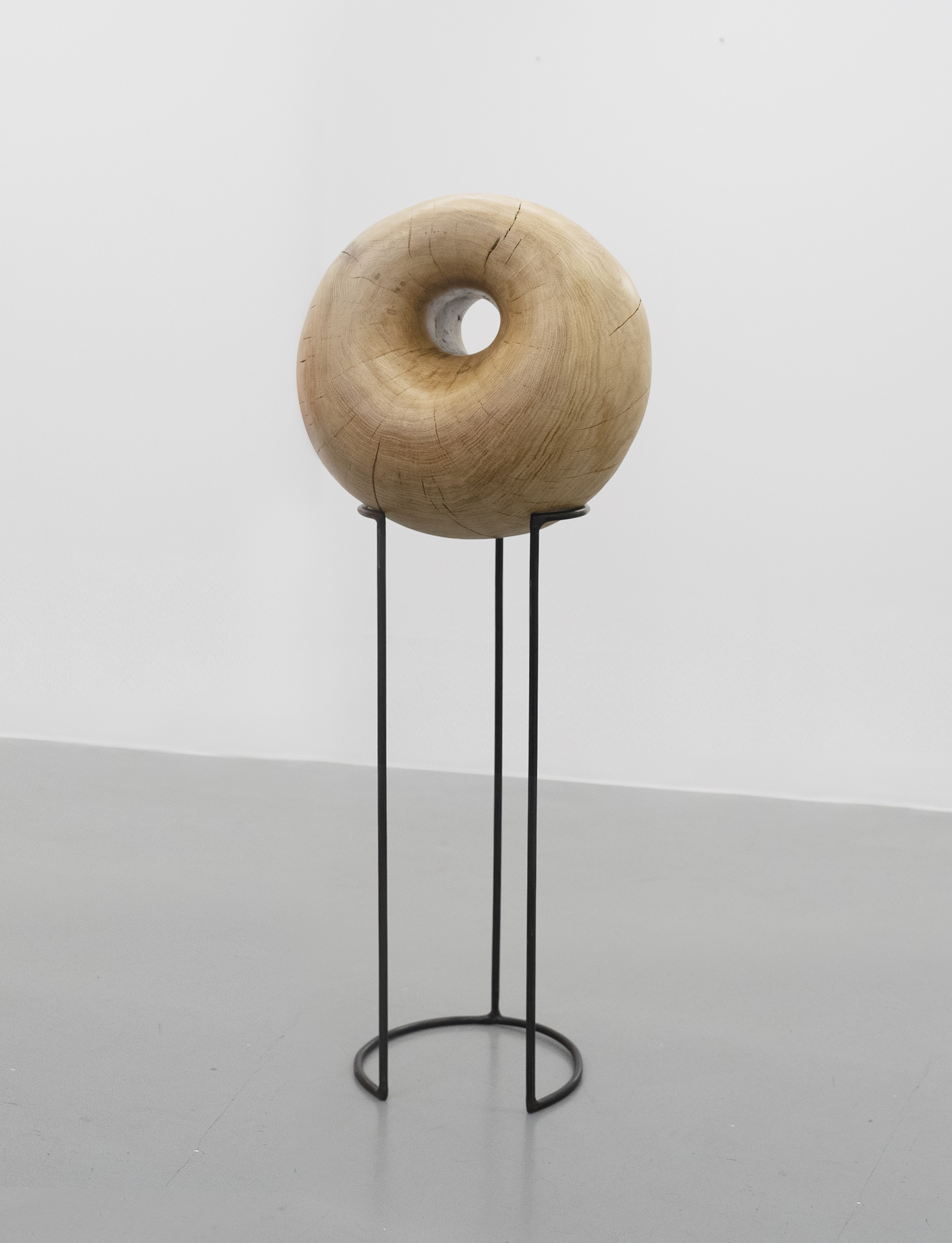
Oak wood, metal base
124 x 43 cm
Signed and dated
Spacetime Warp is a set of wooden sculptures, which offer a metaphor of general relativity. The trees contain within them a very particular testimony of the passage of time. The distance formed between each ring during a specific lapse of time symbolizes a form of materialized space-time. By sculpting each piece of wood in the same way that stars bend space-time by their mass, Spacetime Warp operates a symbolic inversion between visible and invisible. The act of carving makes matter disappear and gives shape to emptiness. Space-time, through the patterns left by the rings becomes palpable and visible, as the star is guessed by the light that can be seen at the end of the cavity.
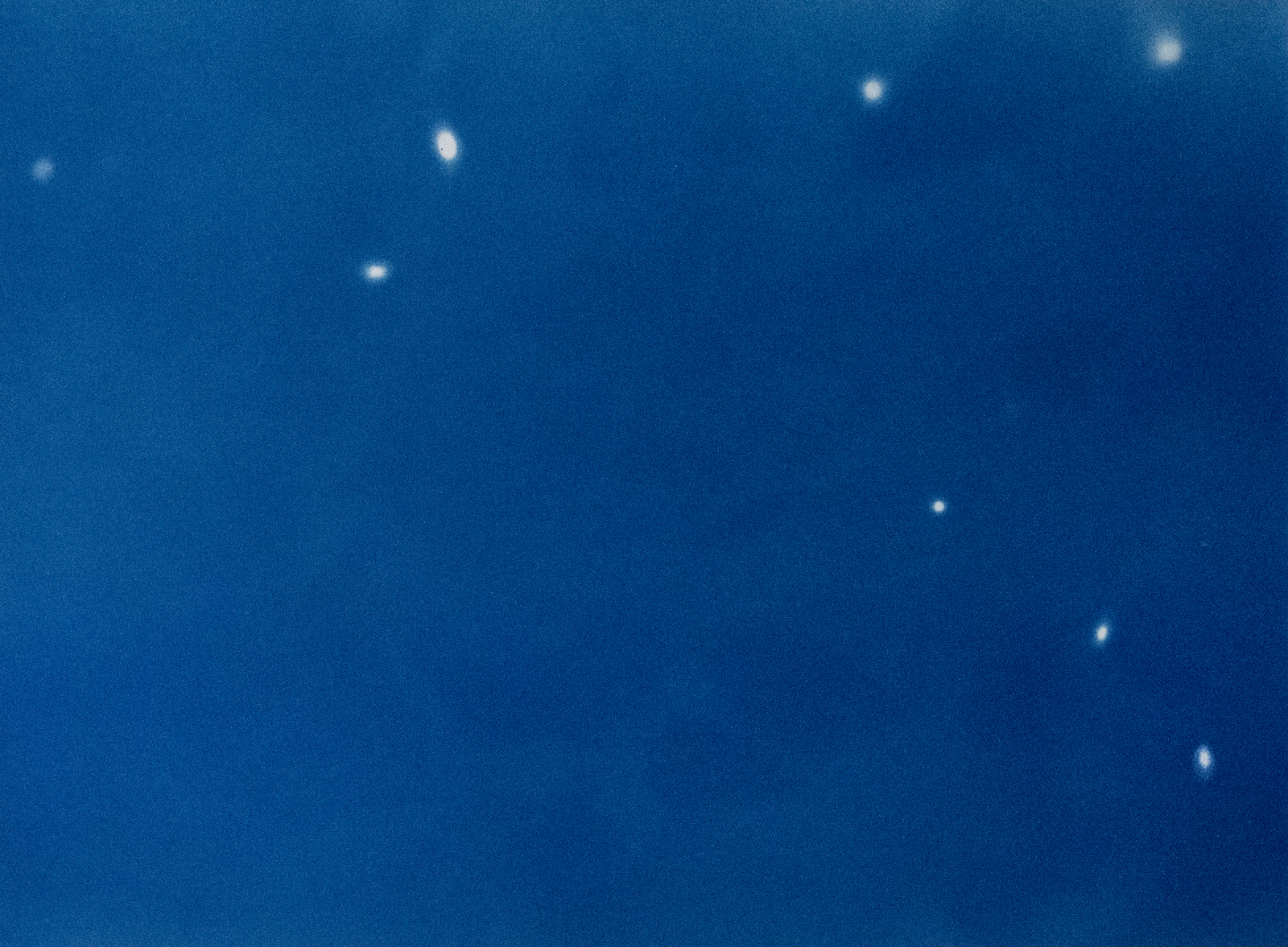
Image: 39 x 53 cm
Frame: 40 x 54 cm
Signed, titled, dated at the back
Depuis l'origine de l'univers la matière s'assemble grâce à la lumière, formant ainsi des objets de plus en plus complexes, des étoiles, des galaxies, engendrant ainsi toujours plus de lumière. La lumière est ce qui nous lie au cosmos, depuis l'origine de l'univers jusqu'à l'apparition de la vie. Il se trouve que la vie elle-même compte parmi les formes complexes les plus lumineuses que l'univers ait engendré. Cette idée, développée et calculée par l'astrophysicien David Elbaz dans son livre ”la plus belle ruse de la lumière” est à l'origine la série “lumière terrestre”. Dans cette série de photos, on peut distinguer une multitude de points lumineux répartis dans l'espace comme les constellations d'un ciel étoilé. Ces sources de lumière sont pourtant bien plus proches de nous, sur terre. Il s'agit de la signature thermique des abeilles. La chaleur qu'elles émettent rayonne en lumière infrarouge et est ensuite capturée par une caméra thermique. En utilisant la technique du cyanotype mise au point par l'astronome William Herschel en 1842 pour imprimer ces photos, la lumière invisible de la chaleur des abeilles est rendue visible par la lumière du jour, nécessaire au cyanotype pour se révéler.
Le génie humain envoie dans l'espace des télescopes de plus en plus perfectionnés dotés de caméras infrarouge pour observer dans l'infiniment lointain des objets célestes, souvent invisibles, qui s'éloignent de nous du fait de l'expansion de l'univers. Dans cette série, l'artiste utilise les mêmes caméras infrarouge pour regarder cette fois dans notre environnement proche des objets qui pourtant loin d'être invisible, disparaissent peu à peu du champ de notre attention collective. Cette série marque un tournant dans la recherche de l'artiste qui introduit pour la première fois le vivant dans son travail, tout en poursuivant son exploration de la lumière, mais cette fois, de la lumière terrestre.
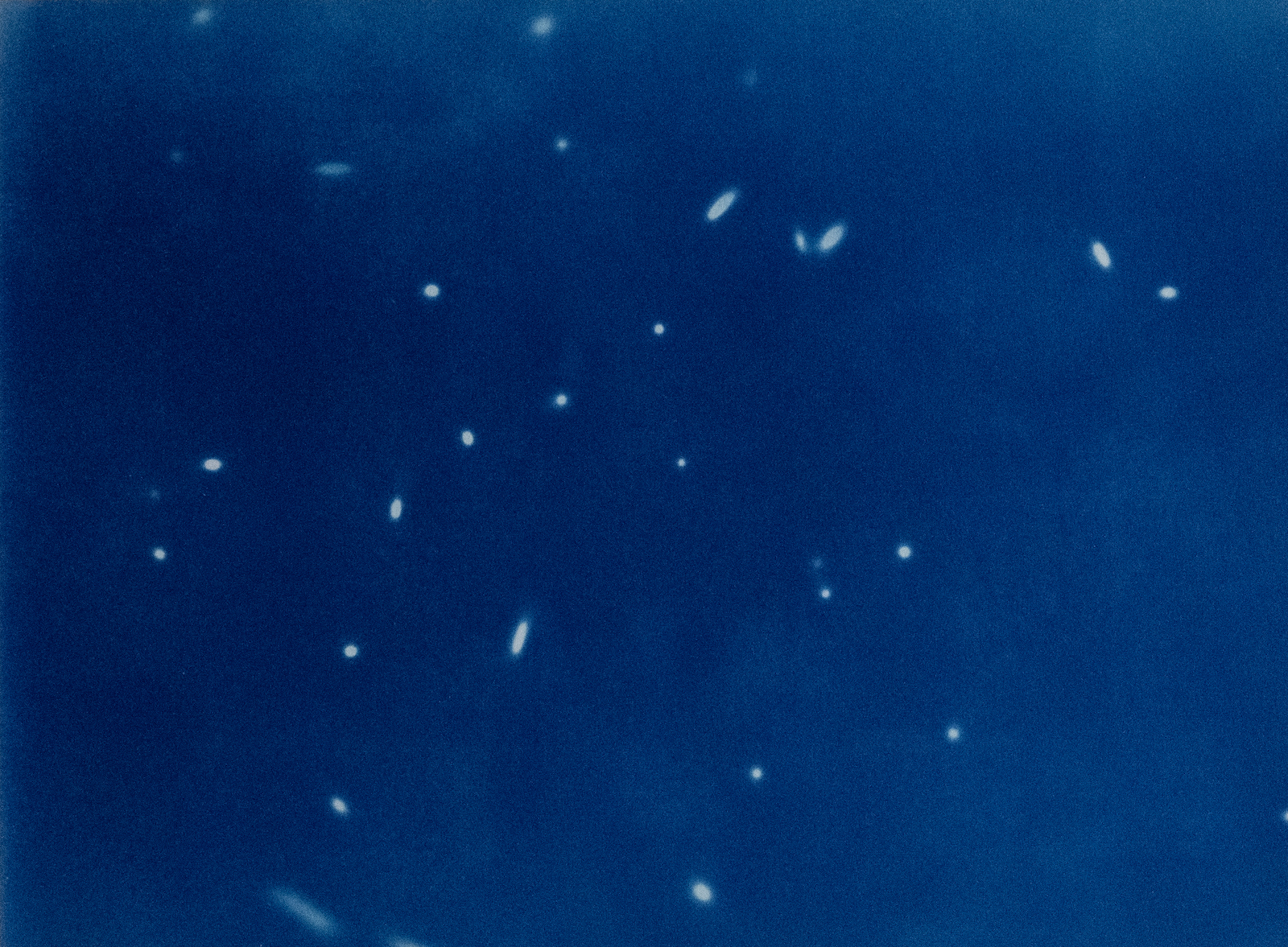
Image: 39 x 53 cm
Frame: 40 x 54 cm
Signed, titled, dated at the back
Since the emergence of the first particle, matter assembles itself thanks to light, forming increasingly complex objects, stars, galaxies, thus generating ever more light. Light is what links us to the cosmos, bringing us informations, from the origin of the known universe to the appearance of life. It turns out that life itself is among the most luminous objects the universe has produced. This idea, developed and calculated by the astrophysicist David Elbaz in his book “La plus belle ruse de la lumière” (“The most beautiful trick of light”) is at the origin of the “terrestrial light” series. In this series of photography, we can distinguish a multitude of bright dots distributed in space like the constellations of a starry night. But these light sources are much closer to us, on earth. This is the thermal signature of bees.
The heat they emit radiates as infrared light and is then captured by a thermal camera. Using the cyanotype technique developed by astronomer William Herschel in 1842 to print these photos, the invisible light from the bees' heat is made visible by the daylight needed for the cyanotype to reveal itself.
Human genius is sending increasingly sophisticated telescopes equipped with infrared cameras into deep space to observe extremely distant celestial objects, often invisible, moving away from us due to the expansion of the universe. In this series, the same infrared cameras are used to look this time in our close environment, objects which far from being invisible are however gradually disappearing from the field of our collective attention. This series marks a turning point in the work I was doing until now by introducing living being, while keeping exploring light. But this time, terrestrial light.
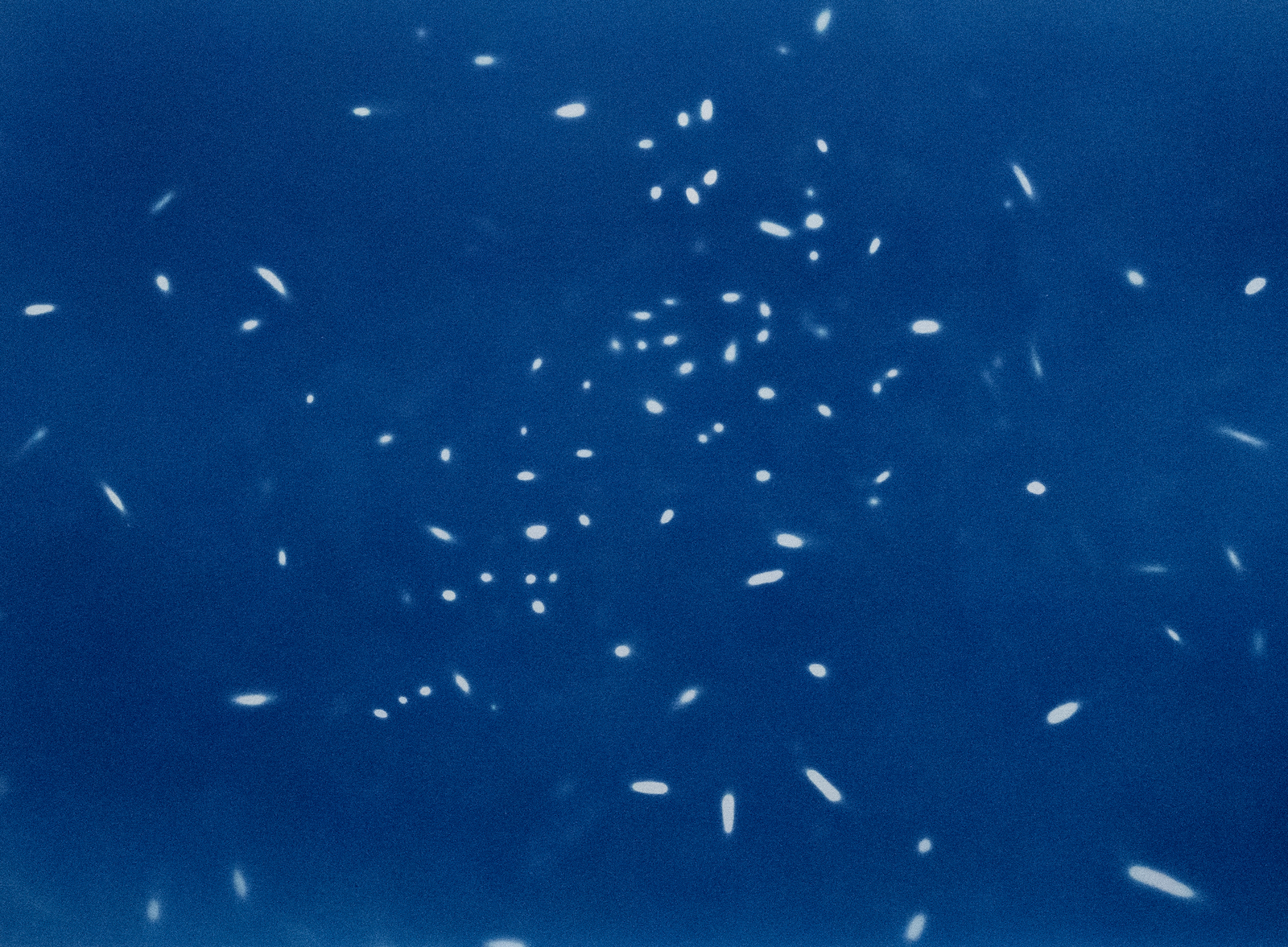
Image: 39 x 53 cm
Frame: 40 x 54 cm
Signed, titled, dated at the back
Dans cette série, on distingue une multitude de points lumineux répartis dans l'espace comme les constellations d'un ciel étoilé. Ces sources de lumière sont pourtant bien plus proches de nous, sur terre. Il s'agit de la signature thermique des abeilles. La chaleur qu'elles émettent rayonne en lumière infrarouge et est ensuite capturée par une caméra thermique. En utilisant la technique du cyanotype mise au point par l'astronome William Herschel en 1842 pour imprimer ces photos, la lumière invisible de la chaleur des abeilles est rendue visible par la lumière du jour, nécessaire au cyanotype pour se révéler.

60 x 42,5 cm
Signed, titled, dated at the back

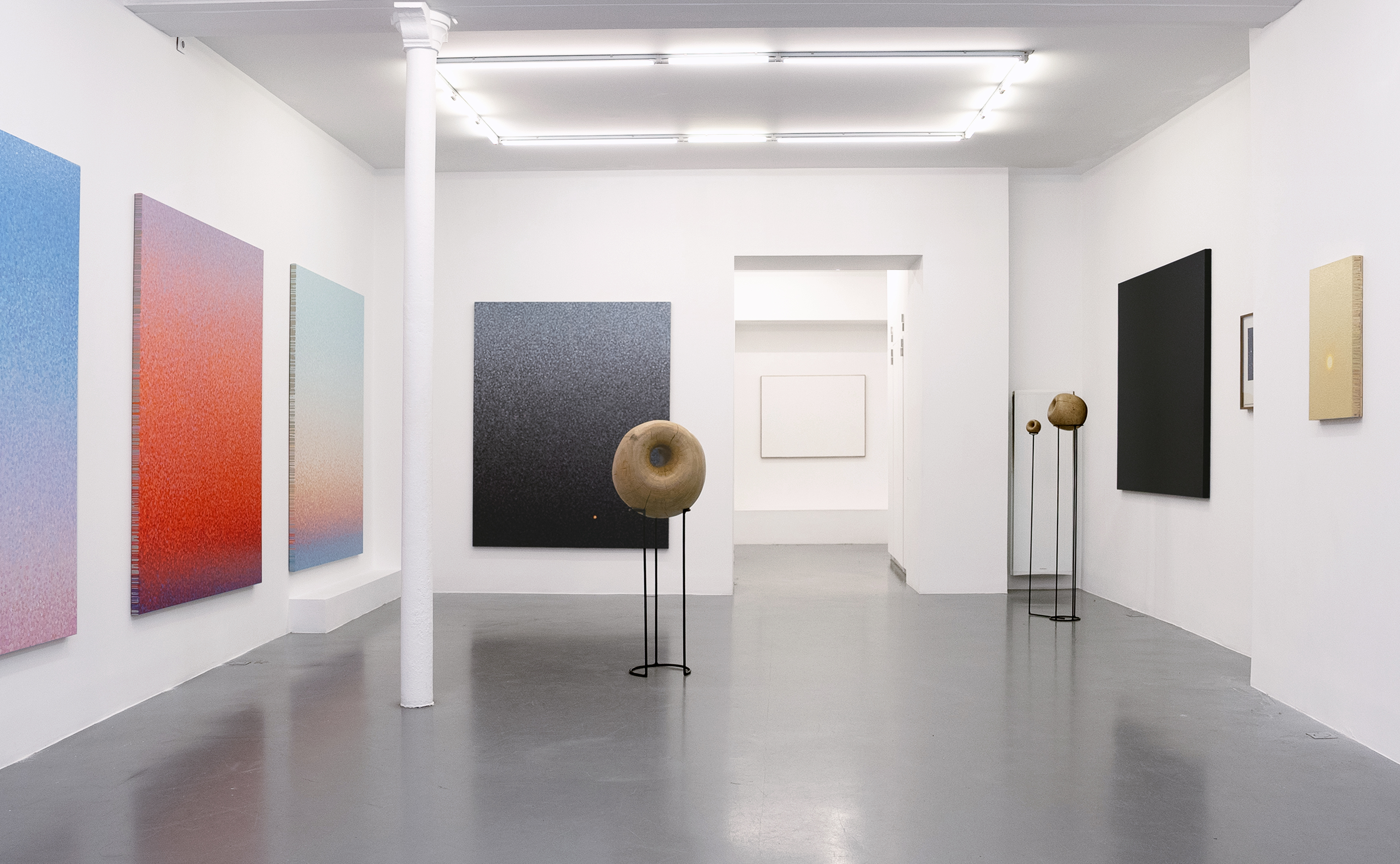

Solo exhibition from 4 November to 16 December 2023
Opening on Saturday 4 November 2023, 2pm to 7pm.
For her first solo exhibition in Paris, Cyrielle Gulacsy presents a body of new work in a variety of media: painting, drawing, photography and sculpture. In contrast to her previous exhibition in New York, "Light in the Distance », which led us to the most distant glows of the cosmos, "Lumière terrestre" proposes a return to Earth.
It's a landing, no longer guided by the stars, but by life: one of the most powerful light source the universe has created.
These new works are inspired by the research of astrophysicist David Elbaz, described in his book La plus belle ruse de la lumière.
Exhibition text written by David Elbaz
Astrophysicist
Scientific Director of the Astrophysics Department - CEA Saclay
Managing Editor of the journal Astronomy & Astrophysics
Look around you: the shape of trees, leaves and flowers embodies a universal principle that permeates the universe as far as the eye can see. In the beginning, there was nothing alive, and yet it was already there. Our telescopes bear witness to it: since the dawn of time, light has been multiplying and matter has been organizing itself. The shapes of the first stars and the nebulae that support them obey the same principle that unfolds the petals of a flower: capturing light and multiplying its grains, the photons.
By chance?
Yes, of course, two shapes are never alike, and from chance emerge the singularity behind the beauty.
A dream?
Naturally. Isn't night the dreamer's shelter?
Night, darkness, cosmic voids and other dark nebulae keeps their cards close to their chest. Playing the game of light, which gives them shapes and meaning, using their absence to fill the cosmos.
And what about us?
Beings of light?
And why not.
But also the snail, the clover, the oak. And the Earth... And the Sun...
All living beings are powerful sources of infrared light. Even the smallest insect, in proportion to its mass, rivals the luminous power of a star. We realize that the bee distinguished itself from the star not by its wings or its stinger - although it must be said that the star has none of it - but because the matter that forms the body of the bee radiates thousands times more photons than the one inhabiting the star.
Time disperses light seeds and the world takes shape.
How to capture the essence of this movement, these invisible yet paradoxically luminous transformations? Perhaps this is what gets Cyrielle Gulacsy's works together.
They all stem from the same intention... To see the invisible.
That's where we come from. That's where the light particles are most numerous, because light exists even when our eyes can't detect it. Fortunately, otherwise we would be dazzled by our own light... With them, we can see the invisible, perceive the universal in the singularity of living and terrestrial forms, recognize our cosmic origins, despite our singularities, and rediscover the comfort of finally feeling at home, in the midst of stars and clovers.
When we look at one of Gulacsy's works, the magic happens, reconciling us with the invisible, revealing the universality of our singularity. Our roots dive deep into the earth and into the heart of the universe. Perhaps because what links us to the work of art is our fragility, the cracks through which the light passes.
How is it that we've always known about it but never thought about it?
Our eyes are capable of detecting a single photon. We are not really aware of it, but the experiment has been done, and the researcher who carried it out described the sensation he felt when a photon landed on his retina: a kind of intuition, a form of intimacy with light.
Science conveys a kind of beauty, but it takes time and perseverance to break through the thick shell that separates the insider from the layman. The finesse and precision of Cyrielle Gulacsy's works open small windows that allow us to see inside it, to enjoy the beauty of infinities, of opposites, on the border between the inert and the living, so many expressions of this invisible, inaccessible light that goes back to the origins of the world.
They are an invitation to a form of intimacy with light, with the terrestrial light...